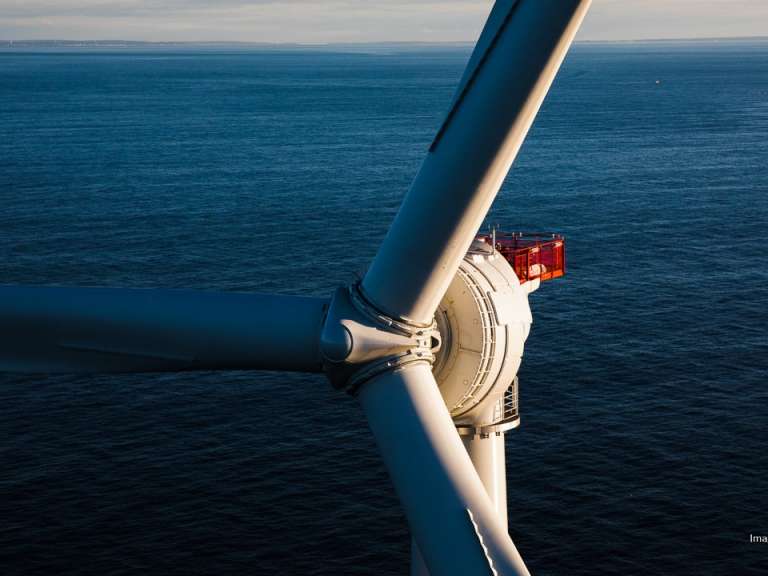Electricity Generation Technologies: Which Comes out on Top?
Heidi VellaConsidering a number of factors such as cost, emissions, and water use, what is the best power generation technology?

Electricity generation technologies, such as coal-fired power plants, nuclear reactors, and wind turbines, offer different advantages and disadvantages for energy generation companies and their customers.
A company wants to deliver electricity that is both reliable and cost effective, but also as environmentally friendly as possible. Which electricity generation technology ticks all these boxes?
In a recent chart, the Electric Power Research Institute (EPRI) illustrates the pros and cons of generation technologies by considering critical factors, including cost—both construction and electricity cost—land use, water requirements, CO2 emissions, waste, availability, and flexibility.
The EPRI's findings highlight that there is no one-size-fits-all solution when considering electricity generation technologies.
In the EPRI's assessment, the advantages of natural gas rank high. For the most part, natural gas is affordable for both construction and electricity, has fewer emissions than coal, and is also relatively flexible.
The popularity of natural gas in certain regions has soared in recent years. This is due to its newfound abundance in places like the US and its reputation as a lower-carbon-emitting fossil fuel, as well as improvements in gas turbine technology.
Yet not all countries have access to plentiful and cheap natural gas. In some instances, access to affordable natural gas has been threatened by geopolitical tensions, such as was the case for Eastern Europe and some of Western Europe during the political contention between Russia and Ukraine a few years ago. Furthermore, although gas produces around half the emissions of coal, it is still not a completely carbon-free or renewable source.
Renewable energy technology, such as wind turbines, solar PV modules, and hydro dams, produce emission-free electricity, and the technology is now cheaper than ever—often cheaper than competing sources. Most countries will have access to one or more renewable energy resources.
However, renewables typically require a lot of land and are intermittent and weather dependent. At present, they cannot be relied on to meet all demand.
Coal, the traditional base-power generator, ranks high in the EPRI chart for disadvantages. It is the biggest CO2 emitter and requires a lot of water and land use. Even with carbon capture storage, it ranks low.
However, losing coal generation can cause problems. In South Australia, for example, coal plants have dropped out of the market due to the cost competitiveness of renewables and state policy that favors clean energy over emission-intensive energy. As a result, electricity supply has suffered from a loss of base power, forcing the local government to intervene.
Furthermore, for developing countries like India, which has access to a lot of cheap coal, coal-fired generation provides much-needed, dependable base-power generation at a reasonable cost. This proves that, despite its disadvantages on the EPRI's list, coal is still an important source of electricity.
Nuclear fared well on the assessment. However, while it is cleaner than coal and meets base-power need, the capital-intensive nature of nuclear is often prohibitive. For example, EDF Energy, which is building a new nuclear power plant in the UK called Hinkley Point C, recently announced that the cost of the plant would be 1.5 billion euros, or around 1.3 billion USD, according to the BBC, which is 10 percent more than expected.
Future technology could mitigate some of the challenges associated with electricity generation technologies going forward. For example, gas turbines integrated with battery backup enable contingency reserve without fuel burn, helping turbines to operate in ways they could not in the past.
The intermittent challenges of renewables could be mitigated by the development of affordable, large-scale energy storage. PJM Interconnection in California has proven that this is possible, albeit on a relatively small scale compared to the wider US electricity market.
Other technologies such as demand-side response and smart meters are also changing the way energy is consumed.
Nevertheless, demand is expected to grow globally, and the EPRI model shows that a diverse energy mix will be needed.
There is no one golden energy-generation technology that can provide reliable and cost-effective electricity with as little environmental impact as possible. When considering an electricity generation portfolio, diversity of supply and maintaining a balance should be a priority.
The UK, for example, represents a diverse and balanced energy mix with 30 percent natural gas, 22 percent coal, 21 percent nuclear, and around 25 percent renewables, according to Energy UK. The rest comes from interconnectors in Europe.
Natural gas—with its faster start-up times and lower emissions—can help balance out the intermittent nature of renewables. However, in regions where natural gas isn't widely available, but there is an abundance of coal, coal-fired power plants may be a better option.
Depending on the area, coal will likely still be needed to ensure the reliability of baseload generation, even in a gas and renewables energy mix. If there is a need to balance out the negative environmental consequences of coal, fleets can add more wind and solar to the mix.
Furthermore, if capital investment is available and reducing emissions is a priority, then nuclear may be a better option than coal.
It's also important to note that regional considerations, such as fuel availability, regulation, and air emissions targets, are important factors and can sway companies to invest in certain energy technologies over others.
China is ready to launch what will be the largest carbon cap-and-trade scheme in the global power sector—a move that could be the catalyst for an international CO2 market.
Demand-side response technology can help utilities better manage load dispatch at times of peak demand, gain greater insight into customer behavior, and capture new revenue streams.
Virtual reality training systems can provide safe instruction about dangerous jobs, but it doesn't stop there. The technology can—and is —being used in the power sector to improve design, PR, maintenance, and disaster response processes.